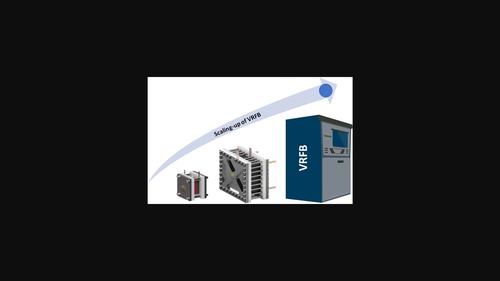千瓦级钒氧化还原液流电池的技术标杆与挑战
IF 5.4
3区 工程技术
Q2 ENERGY & FUELS
引用次数: 12
摘要
钒氧化还原液流电池(VRFB)具有易于扩展和长寿命等独特的特点,使其成为突出的可再生能源存储技术之一。被其特性所吸引,全球的科学和商业社区现在已经开始测试VRFB的原型/演示,用于处理kW - MW规模的各种应用。一些科学小组已经在文献中讨论了kW级(高达10kw) VRFB的设计和性能。有趣的是,所讨论的设计是用不同的方法开发的,并取得了不同的结果。在这篇综述中,我们通过分析与设计相关的材料,了解流动工程方面的发展,以解决压力和分流电流损失以及整体电化学性能,批判性地研究和讨论了kW级VRFB的这些贡献。迄今为止,kW级VRFB系统在100 mA⋅cm−2的电流密度下实现了约80%的能量效率。虽然大多数VRFB组件的选择是固定的,但其分离器/膜的正确选择仍然需要标准化。有了这些方面的图片,这篇综述文章将有助于为研究人员和工程师奠定一个背景,了解千瓦级VRFB的现状和工程问题,这是扩大规模的基石。本文章由计算机程序翻译,如有差异,请以英文原文为准。

Technical benchmarking and challenges of kilowatt scale vanadium redox flow battery
Unique features of vanadium redox flow battery (VRFB), such as easy scalability and long durability, qualifies it as one of the prominent renewable energy storage technologies. Attracted by its features, scientific and commercial community around the globe have now begun to test prototypes/demonstrations of VRFB for a wide array of applications that deal at a scale of kW‐MW. A few scientific groups have discussed the design and performance of kW‐scale (up to 10 kW) VRFB in literature. It is interesting to note that the discussed designs have been developed with a diverse approach and have achieved different results. In this review, we critically examine and discuss those contributions at kW‐scale VRFB by analyzing the materials associated with their design, understanding the development of the flow engineering aspects in order to tackle the pressure and shunt current losses and the overall electrochemical performance. Till date, kW‐scale VRFB system has achieved an energy efficiency of ~80% at current densities of 100 mA⋅cm−2. Though the choice for majority of VRFB components is fixed, the right choice for its separator/membrane still needs to be standardized. With these aspects in picture, this review article will help to lay a background for researchers and engineers to know the present state‐of‐art and engineering issues at kW‐scale VRFB, which is a building block for scaling up.
求助全文
通过发布文献求助,成功后即可免费获取论文全文。
去求助
来源期刊

Wiley Interdisciplinary Reviews-Energy and Environment
ENERGY & FUELS-
CiteScore
11.70
自引率
3.30%
发文量
42
期刊介绍:
Wiley Interdisciplinary Reviews: Energy and Environmentis a new type of review journal covering all aspects of energy technology, security and environmental impact.
Energy is one of the most critical resources for the welfare and prosperity of society. It also causes adverse environmental and societal effects, notably climate change which is the severest global problem in the modern age. Finding satisfactory solutions to the challenges ahead will need a linking of energy technology innovations, security, energy poverty, and environmental and climate impacts. The broad scope of energy issues demands collaboration between different disciplines of science and technology, and strong interaction between engineering, physical and life scientists, economists, sociologists and policy-makers.
 求助内容:
求助内容: 应助结果提醒方式:
应助结果提醒方式:


